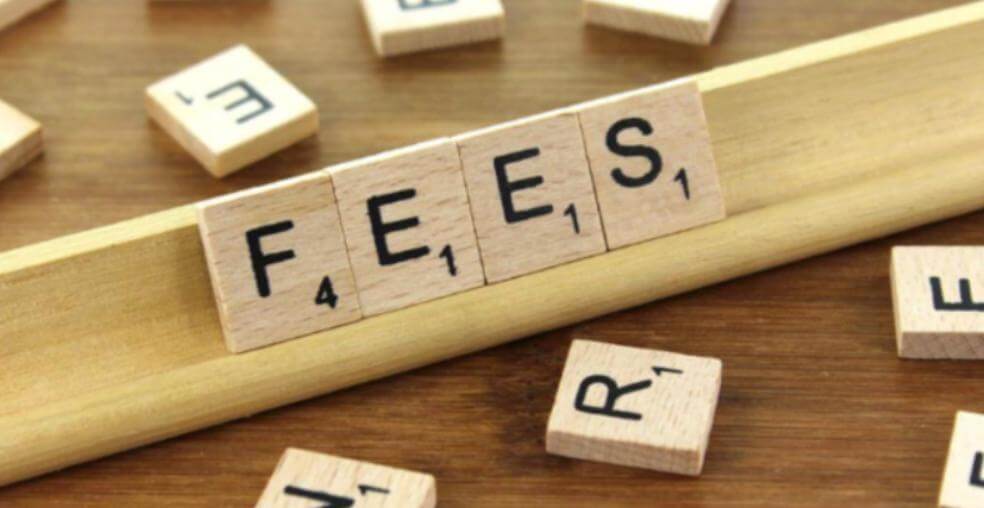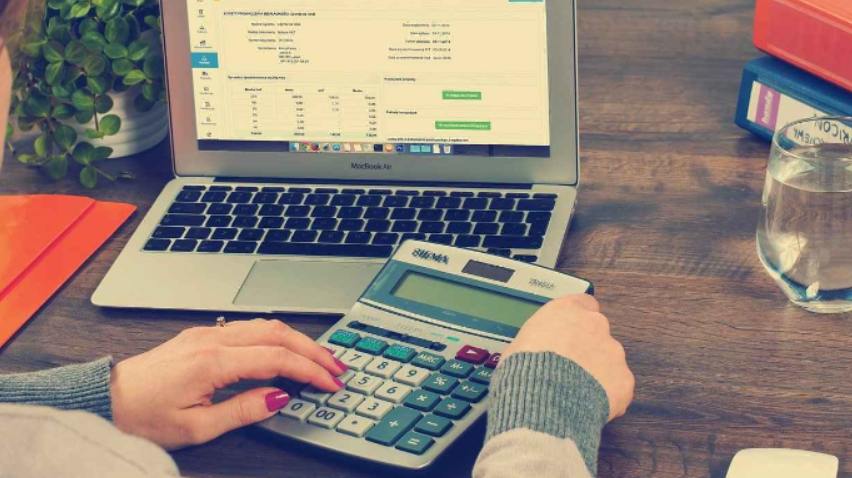Amazon is a business that makes money by selling items but also by selling space on its platform for you to sell products. Its unique dominance of the e-commerce market is an asset that it seeks to monetize.
It does this via Amazon FBA fees applied to those people who choose to sell using the Amazon name.
From Amazon FBA storage fees to shipping fees, there are a host of ways that Amazon will take a cut of your seller’s profits.
The general guidance is that the fee will come to about 15% of the item’s price – which might seem a small price for accessing the brand power of Amazon.
Here we offer you some more detail to help you make an informed choice.
Amazon FBA Fees Explanation

If you sell on Amazon, there are three ways the exchange between you and your buyers can be fulfilled.
First, there is the option to have the item Fulfilled by Amazon, also known as FBA. This is where the seller ships the inventory to Amazon and from here Amazon takes responsibility for fulfilling the order.
This is the focus of this article. If you are interested, you could become an FBM (Fulfilled by Merchant) where Amazon takes the order and no more.
Then, there is SFP (Seller-Fulfilled Prime), where the seller promises to ship using the strict guidelines laid out by Amazon Prime.
Out of these options, FBA is by far the most common option taken by sellers. The opportunity to have Amazon Fulfilment centers store the inventory and then pick, pack and ship it to your customers is highly appealing.
Most of all, this FBA status is simple. Your eCommerce processes are taken care of for you, and you merely need to manage the stock and sales. However, you pay for this privilege.
The pricing is both complex and expensive. What you might be charged can vary widely depending on the level of service you select.
Your choice about whether to use all or some of the FBA services depends on how willing you are to outsource fulfillment to a third-party logistics company.
Alternatively, if the fees are too high, you may end up selecting to host your own shop on an alternative eCommerce platform.
How Much Does It Cost to Sell on Amazon?
It is difficult to give a firm answer to any questions about the level of fees when you are part of the Amazon FBA scheme.
The charges change dependent on season, the type and size of your items to be stored and ship – as well as many other factors.
When you go to the Amazon services site it is clear that they offer a flexible rate structure that allows you to only pay for the services you use.
Here we break down the different options available to you.
General sellers’ fees
Referral Fees
The referral fee is the amount paid to Amazon for each item sold on the platform. This is like a commission and usually is a flat percentage amount, usually 15% or less.
You only get charged this amount after the product has sold. The most expensive item to sell via Amazon is an Amazon Device accessory, where the referral percental is 45%.
Books and luxury clothing are also quite expensive at 15% – 18%. However, most other products stand at 8% of the sale price.
All items have a minimum referral fee per-item of $0.30.
Seller Subscription Fee
As an FBA seller, you will be classed as a professional seller. You will there pay a monthly subscription of $39.99.
The subscription is taken from your Amazon account balance. If your balance is empty the amount will be taken from your credit card.
If you prefer to opt for an Individual Seller Plan, there are no monthly subscription fees. Instead, you pay for a small fee for each item you sell.
Refund fees
If there is a request for a refund you will be charged a fee to process this refund. This is usually about £5 or 20% of the refunded charged – whichever is the lower amount.
FBA Seller Specific Fees
If you want Amazon to pick and pack your item, then send it to your customer, you will be charged by size, type, and weight.
The following shows prices, as of March 1st, 2020, per unit for the Amazon FBA shipping fees.
| Standard-size (Size/ Weight) | Standard-size (non-apparel) | Standard-size (apparel) | Oversize (Size/ Weight | Amazon FBA Oversize Fees (both apparel and non-apparel) |
| Small (10oz or less) | $2.50 | $2.92 | Small (71lb or less) | $8.26 + $0.38/lb above first 2lb |
| Small (10+ to 16oz) | $2.63 | $3.11 | Medium (151lb or less) | $11.37 + $0.38/lb above first 2lb |
| Large (10oz or less) | $3.31 | $3.70 | Large (151lb or less) | $75.78 + $0.91/lb above first 90lb |
| Large (10+ to 16oz) | £3.48 | $3.81 | Special oversize | $137.32 + $0.91/lb above first 90lb |
| Large (1+ to 2lbs) | $4.90 | $5.35 | – | – |
| Large (2+ to 3lbs) | $5.42 | $5.95 | – | – |
| Large (3+ to 21lb) | $5.42 (+ $0.38/lb above first 3lb | $5.95 + $0.38/lb above first 3lb | – | – |
You will need to add $0.11 per unit if the item contains lithium batteries.
Amazon FBA Storage Fees
The monthly inventory storage fee within the Amazon Fulfilment center is based on a set fee per calendar month, as well as your daily average volume.
The amounts cited below are per cubic foot of space in the fulfillment center.
| Standard Size January to September | $0.75 |
| Standard Size October to December | $2.40 |
| Oversize January to September | $0.48 |
| Oversize October to December | $1.20 |
Read also: Amazon Long Term Storage Fees: 5 Tips FBA Sellers Should Never Miss
What does this all mean?
If we just take fulfillment only and do not take account of any storage, the following case studies give you an idea of your costs.
If you want to calculate storage too, you would hope your item would be sold within a month and that both these items would only take a square foot of space.
Case Study 1: A t-shirt
Imagine you are selling a t-shirt in the months between January and September. Its dimensions and weight make it a large standard size. It has a shipping weight of 11oz.
The fee for selling this unit on Amazon FBA would be $3.81 per unit. If you can source your t-short for $2 and sell your t-shirt for $10, then you can see how much your FBA fees can eat into your profit margin.
You then have to think about how much it would cost you to store and ship your stock and if this fee is worth your while. Remember to factor in your time when making these calculations.
Case Study 2: A computer monitor
The computer monitor’s dimensions and weight place it in the large oversize category. The shipping weight is 49lbs.
Therefore, the fulfillment fee will be $75.78. Imagine that you sourced the monitor for $50 and you are selling it at $200. Is it worthwhile?
Again, factor in storage space, shipping and your time. With something like a monitor, you will likely need additional insurances when storing your inventory.
Guaranteeing the safe delivery of a monitor is slightly more concerning than the shipping of a t-shirt.
Amazon FBA Calculators for Sellers

Considering the complexity of the fee structure, it is likely that you will need a calculator to help you work out how much it will cost you to use the Amazon FBA Fulfilment services.
You will also want to compare this price to the cost of alternative means of storing and shipping your products.
Amazon Revenue Calculator
Amazon offers its own FBA Revenue Calculator. This is a means of checking the profitability of selling your inventory using FBA.
This is available in your seller central account. It promises to show you the real-time cost comparisons between your fulfillment of an order and those orders fulfilled by Amazon.com.
It also offers all sorts of disclaimers about the accuracy of the calculator, noting it is only for guidance.
Amazon also suggests that you seek independent guidance to evaluate the validity of the results.
What is useful about the calculator is that it allows you to calculate using the UPC, EAN, ISBN or ASIN of the product.
This is an important feature because it will guarantee the accuracy of the information provided.
The weight and dimensions will be linked information to the product numbers.
Depending on your country of origin, your FBA calculator can be found here:
- US FBA Calculator
- UK FBA Calculator
- France FBA Calculator
- Germany FBA Calculator
- Italy FBA Calculator
- Spain FBA Calculator
- Mexico FBA Calculator
- Canada FBA Calculator
- India FBA Calculator
Jungle Scout
For the cost of your email address, Jungle Scout will give you access to “your free FBA profit calculator”.
Obviously, it is worth looking at the terms and conditions to see what happens to your data. Not only the email address but also your inputs into the calculator itself.
Although Jungle Scout is great fans of the Amazon FBA Revenue Calculator, they point out that this might not be your only outgoings.
Therefore, they suggest downloading their calculator to help you get the bigger picture. They promise to help you find your Net Margin Per Unit.
This calculator is useful for helping you remember the details, such as advertising, giveaways, your cost per unit – and more.
It is also a useful way of checking the details provided by Amazon’s calculator – as this offers some independent pricing suggestions.
Seller App
Another “free” calculator comes from Seller App. This is a SaaS tool and you merely need to upload the Amazon product URL or the ASIN to plan out your potential profitability.
The app allows you to calculate the different selling fees based on different choices – depending on your fulfillment mode.
It will also offer an analysis of the profitability of the product.
The margins suggested are only a guide and there is not the level of detail, in terms of marketing, promotions, giveaways and other costs, promised by Jungle Scout.
AMZScout FBA Calculator Extension
AMZScout have leveraged two big names to sell their app. Not only are they offering the chance of calculating the profitability of items on Amazon, but they are offering this as a free extension in Google Chrome.
This calculator is super handy because it appears on the page at the side of the product. Therefore, you can do a standard amazon product search, as if you were a buyer.
Then, for every product you click on it will give you a breakdown of fees along with the cost per unit. You get an immediate recommendation on the profitability of the item.
AMZScout claims this is the simplest calculator around – and to be fair – it is the quickest and most efficient way of scouting your potential inventory on Amazon.
How to Lower My Amazon Fees?
After all these fees and costs, you may have put away your Amazon seller hopes and dreams. It is fair to say that selling on Amazon is not for everyone.
You can easily run a home-business while using the Amazon name to help you.
However, it will not be an instant get-rich-quick scheme. You need to show some savvy and make some sound decisions.
Your ultimate success will come from increasing the margins by a cent here and there on each unit.
You need to source your inventory at the lowest cost and then find the best way to minimize your Amazon fees.
But how can you work on your fees to increase your profits?
Use sourcing apps to choose the best products
The ultimate way to lower your costs is to be clever in the products that you sell.
There are product research apps, such as Jungle Scout, that will help you to select your inventory.
It is essential to factor in the storage and postage fees when choosing these products – as well as the percentage referral fee.
For instance, you might think selling watches is a sound idea – small and relative lightweight products – but they come with a 15% referral fee.
Therefore, your starting point for developing an inventory is research into the marketplace and your competitors – choosing items that incur minimal fees but maximum profits.
Join Amazon small and light
A way to ensure that your item is impacted by the lowest fees is by choosing products that would fall with the Amazon Small and Light scheme.
Here Amazon offers a fulfillment solution – usually aimed as fast-moving products – that is cheaper than using the standard FBA fulfillment model.
Choose overseas warehouses
You might be able to lower your storage costs by choosing an overseas warehouse.
This does not count for Amazon Warehouse sales but for general sales from a normal distribution center, you can research the best prices.
Limit stocks you sell through the Amazon Warehouse
Some items will be best sent through Amazon. Other items it makes no sense to pay the FBA fees.
Any item that costs less than $15 should probably not be stored in a fulfillment center.
So, that t-shirt at $10 would probably be best stored in your spare bedroom. Equally, relatively cheap but large items in terms of dimensions are not going to be cheap to store at a fulfillment center.
Imagine selling something like a baby’s cot. The size of the box alone will cost you a lot in terms of dollar price per square foot.
Equally, you should probably avoid sending extra heavy items. You will pay a lot for the extra weight and this can really dig into your profit margins.
If you are not a big eCommerce seller with your own business premises, you should probably not be selling such large, big-ticket items.
Watch out your inventory performance dashboard
When you sign up to seller’s central, you receive a tool for tracking your items and the fees they are incurring. You need to monitor this closely.
You should be able to access advice on how to streamline your inventory here too, making the most of the Amazon services for the lowest cost. Amazon will advise you on your standard inventory actions.
What this means is it will help you understand what needs to be fixed to help your products become buyable.
The dashboard also offers restock recommendations, as well as excess inventory suggestions, and the impact on your long-term storage fees.
There are options to dump excess inventory using the Amazon Returns scheme.
Read also: Top 10 Amazon Inventory Management Tools for Selling on Amazon
Create Bundles
If you sell 10 items together in a bundle it will be sent as a single unit, not as 10.
You will have to be creative in how you bundle items, ensuring that you use clever cross-selling strategies to help your bundle make sense.
However, if you can create a bundle like this, you can see how you will be saving a substantial amount on your FBA fees.
Final Conclusion
Leveraging the Amazon brand is not a bad idea. It is a dominant force in eCommerce, and it would be hard to compete with your own store.
Most sellers will tell you that most profitability comes from selling lots rather than selling a few high-ticket items.
Therefore, the FBA fees are, in reality, a small percentage of your costs in comparison to the boost the platform gives you.
This is not to say you shouldn’t look to manage these with some savvy – but accept these as a part of doing good business.
You may also like:
Amazon Long Term Storage Fees: 5 Tips FBA Sellers Should Never Miss
Best 5 Amazon Seller Scanner Apps You Should Never Miss
Complete Guide on How to Create an Amazon Seller Account
Top 9 Free Amazon FBA Calculators You Must Try
Top 8 Jungle Scout Alternatives For Amazon Niche Product Research
